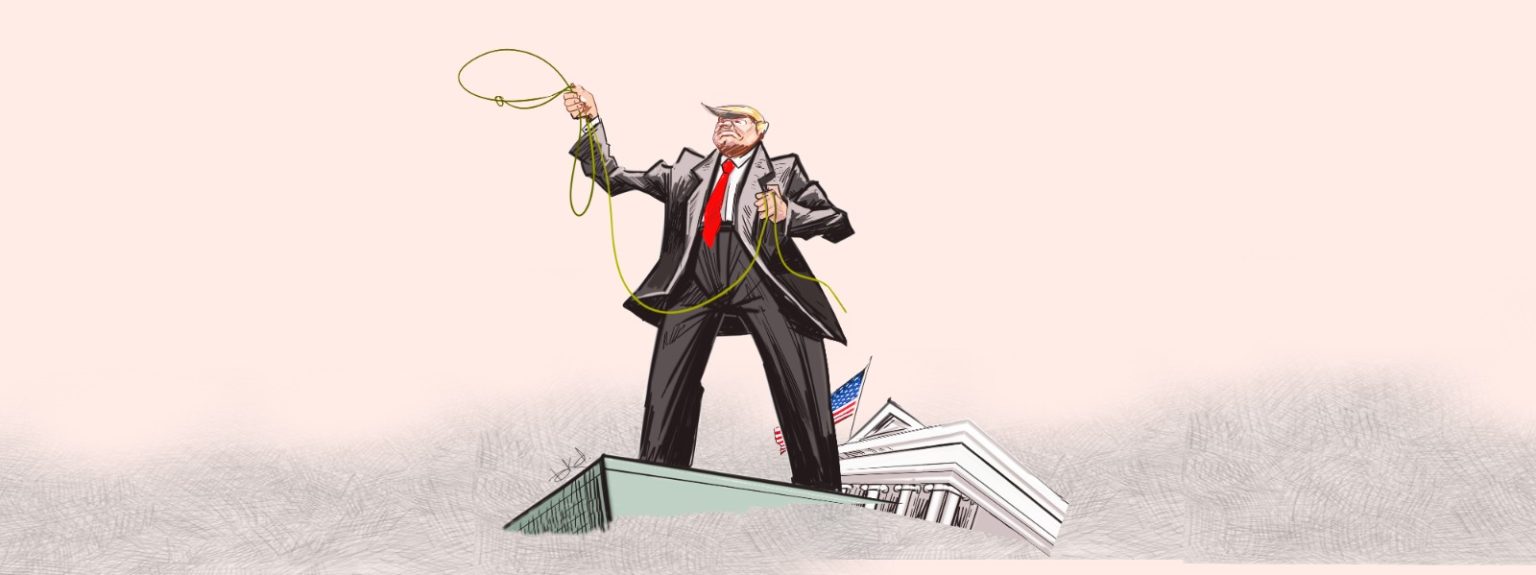The Bangladesh government remains cautiously optimistic about securing a softer outcome in the face of U.S. President Donald Trump’s proposed 35% tariff on Bangladeshi exports, but business leaders warn that time is running out—and the country’s negotiation strategy may already have fallen behind.
Finance Adviser Dr. Salehuddin Ahmed on Tuesday said the tariff – set to take effect on August 1 – is “not final,” adding that senior Bangladeshi officials are engaged in direct talks with the Office of the United States Trade Representative (USTR).
He also confirmed that a critical meeting is scheduled for Wednesday morning, Bangladesh time, during which the country’s negotiating team hopes to make headway in resolving the tariff issue.
Commerce Secretary Mahbubur Rahman noted that Bangladesh has offered to increase imports from the US – including Boeing aircraft, wheat, cotton, and soybeans—to help reduce the bilateral trade gap, a gesture aimed at signaling flexibility ahead of the deadline.
However, trade analysts and exporters say these moves may be too little, too late.
Despite early engagement following Trump’s 2 April announcement, Bangladesh’s approach lacked the clarity and urgency demonstrated by Vietnam, which swiftly offered duty-free access for US imports and is reportedly securing a much lower 20% tariff. Vietnam’s longstanding lobbying infrastructure also stands in sharp contrast to Bangladesh’s absence of formal lobbying efforts.
BGMEA President Mahmud Hasan Khan and BCI President Anwar-ul Alam Parvez have criticized the government for failing to consult key export sectors or appoint a professional lobbying firm, despite repeated appeals from industry leaders.
“The business community was kept in the dark,” Mahmud Hasan warned, highlighting the serious consequences for factories that rely on U.S. markets for over 50% of their sales.
Exporters warn that if major competitors end up with lower tariffs, Bangladesh could face a sharp erosion of competitiveness in the U.S. market—mirroring the decline of the country’s bicycle exports to the USA after the withdrawal of Generalized System of Preferences (GSP) benefits over a decade ago.
According to USTR data, Bangladesh exported $13.2 billion worth of goods – mostly garments – to the US in 2023, accounting for nearly 18% of total national exports.
In contrast, Bangladesh imported $2.2 billion worth of goods from the U.S., down 1.5% from 2023. The U.S. market remains Bangladesh’s single largest export destination, making the tariff threat even more critical.
A 35% tariff, exporters say, could trigger factory closures, job losses, and a sharp decline in foreign currency inflows, all of which could damage Bangladesh’s economy long-term.
Hopes that Bangladesh’s Least Developed Country (LDC) status would secure favorable treatment have also backfired, as the U.S. proposed even steeper tariffs on other LDCs like Myanmar (40%).
This signals that LDC preferences carry little weight under the Trump administration’s trade doctrine.
The delay in submitting specific product proposals, overreliance on WTO principles, and a lack of strategic clarity have further weakened Bangladesh’s bargaining position in Washington.
While the government has expressed optimism, the lack of proactive steps and clear offers could lead to unfavorable results.
With the 1 August deadline fast approaching, the government faces growing pressure to take decisive action to protect the export sector from long-term damage.
If Bangladesh cannot secure a favorable tariff outcome, the impact on its garment industry, which depends heavily on the U.S. market, could be devastating.
As industry leaders continue to call for stronger lobbying efforts and better communication with the government, the next round of negotiations will be crucial in determining Bangladesh’s ability to weather this tariff storm.


